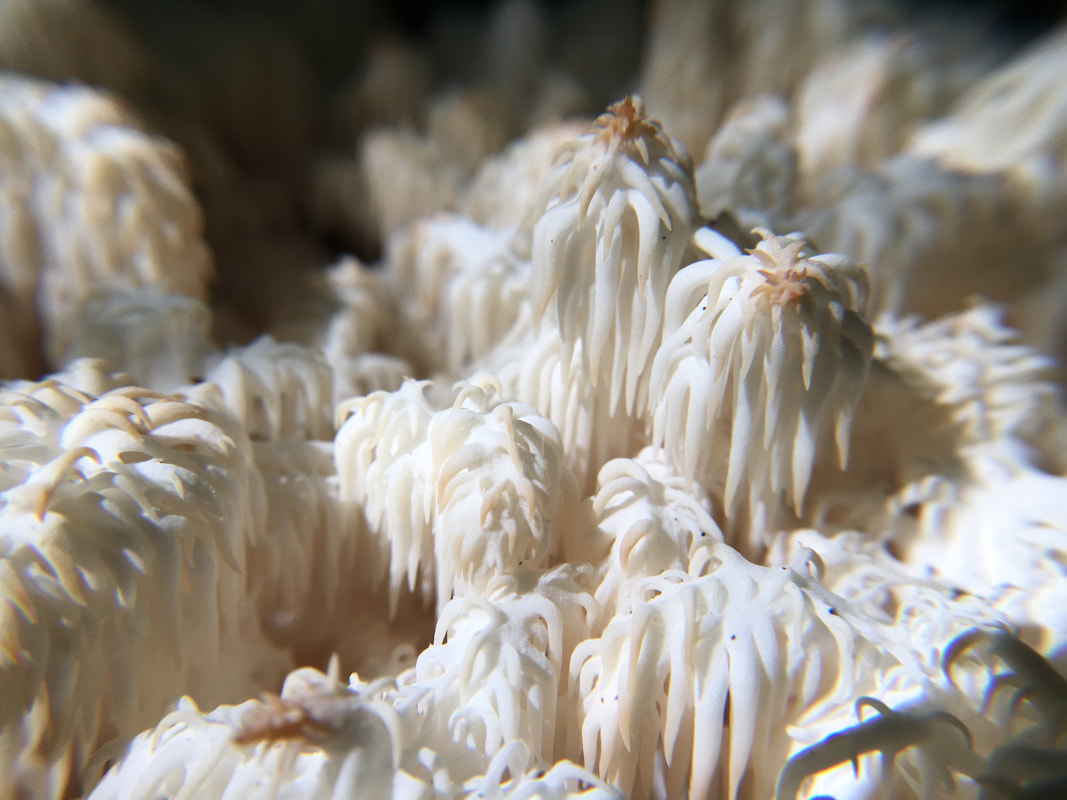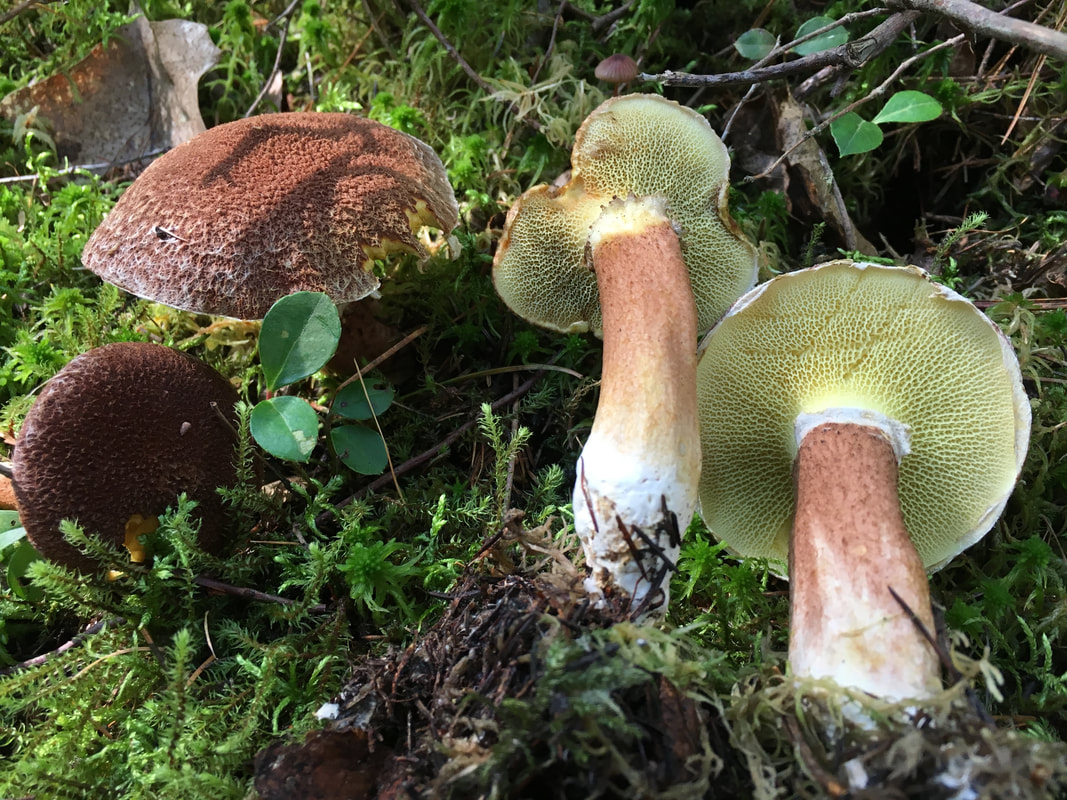|
Mycobank Taxonomy: Fungi, Dikarya, Basidiomycota, Agaricomycotina, Agaricomycetes, Russulales, Hericiaceae, Hericium This magnificent mushroom was growing right off a busy path in the woods. I watched it for days hoping it would grow bigger but not get snatched up by somebody else. Finally, it was ready (and I actually had time to harvest and cook it). Unlike more familiar edible mushrooms with gills or pores, Hericium coralloides has icicle-like spines, or teeth, similar to hedgehog mushrooms (Hydnum spp.). We might be inclined to lump these toothed mushrooms together into the same group, but spines are not a trait indicating shared ancestry. Rather, spines convergently involved in very distantly related taxonomic groups – in this case, Hericium in Russulales and Hydnum in Cantharellales – to achieve a similar mechanism of spore dispersal.
0 Comments
Mycobank Taxonomy: Fungi, Dikarya, Basidiomycota, Agaricomycotina, Agaricomycetes, Boletales, Suillaceae, Suillus If Suillus species were placed under the Hogwarts sorting hat, most would be sorted into Slytherin. They are slimy and downright no good. Suillus ampliporus, on the other hand, would be sorted into Gryffindor because of its firm constitution. It was a pleasure to meet the this noble mushroom in the mossy boglands of northern Michigan. Also known as the larch bolete, S. ampliporus prefers soggy lowlands where it associates as a mycorrhizal fungus with tamarack (Larix laricina). Highlighted by the late afternoon sunshine on the first day of fall, these boletes greeted me in great numbers.
|
PermalinksProject Introduction Top EdiblesHericium coralloides
Laetiporus sulphureus Morchella americana Polyporus umbellatus Suillus ampliporus Archives
April 2023
Categories |
|
|
Terms of Use, Liability Waiver, and Licensing
The material on aldendirks.com is presented for general informational and educational purposes only, and under no circumstances is to be considered a substitute for identification of an actual biological specimen by a person qualified to make that judgment. Some fungi are poisonous; please be cautious. All images on this website are licensed under Attribution-NonCommercial-NoDerivatives 4.0 International (CC BY-NC-ND 4.0). |


 RSS Feed
RSS Feed




